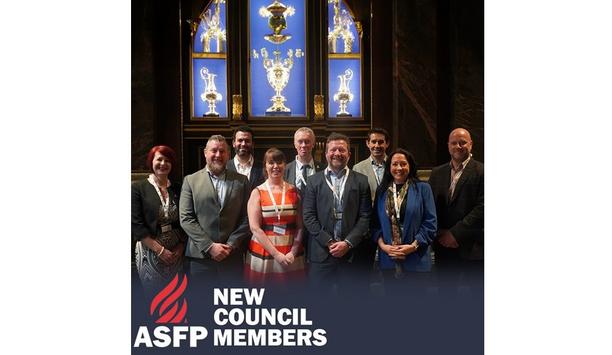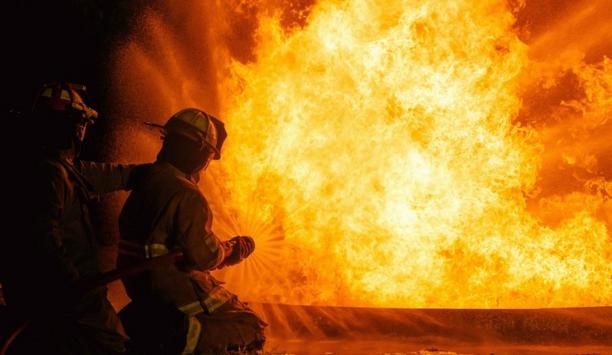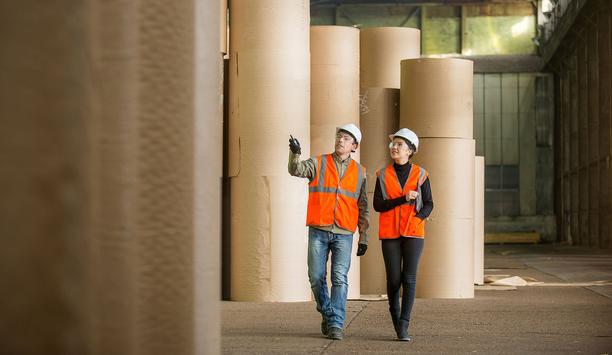Sherwin-Williams - Experts & Thought Leaders
Latest Sherwin-Williams news & announcements
The Association for Specialist Fire Protection (ASFP) appointed its new Council at its 2024 Annual General Meeting (AGM) at Drapers’ Hall, in London, UK, on 11 April, 2024. The 12-strong Council was appointed following a successful election held in February-March in which 21 nominations were received. New and elected seats The Association’s Chair and Vice Chair retain their seats for another year, with the remaining 10 places elected for two years. The Council includes representatives from each of the ASFP’s member categories of Contractor, Manufacturer, Distributor, and Associate, as well as a representative from ASFP Ireland. In 2024, a place for a Principal Contractor member has been created to reflect the growth in membership in this category and ASFP’s increased engagement with this important sector of construction. The new Council members Clive Miles (Chair) – Chair, CLM Fireproofing Sharon McClure (Vice Chair) – Director, Avesta Scotland Ltd Moe Elmasry – Technical Manager, Golden Thread Fire Delay Alan Curran – Fire Engineer / Technical Director, OFR Consultants Carrie Blackshaw – Fire Protection Sales Director, Minster Liam Keenan – Technical & Managing Director, Compliance + Fire Limited Carl Burrell – Regional Market Director, Sherwin–Williams Jamie O'Hagan – CEO, Structural Fireproofing Systems Matthew Jones – Head of Fire Protection and HVAC, ROCKWOOL International Ian Outram – Firestopping Technology Manager, CPG UK Will Pitt – Technical Leader – MEICA Specialist Systems, Laing O'Rourke John O’Callaghan – Managing Director, Complete Coating Services The AGM offered all attending ASFP members their first opportunity to meet the new Council. They also received updates from ASFP officers on Association activities during 2023 and its plans, with the ASFP’s vision introduced by ASFP Vice Chair - Sharon McClure. office and training academy He detailed key activities in further developing the ASFP Competency Pathway and launching new training courses ASFP Managing Director - Mike Ward provided an update on ASFP operations, highlighting the successful purchase, fit-out, and occupation of the ASFP’s new office and training academy in Coventry. He also detailed key activities in further developing the ASFP Competency Pathway, as well as launching new training courses and membership groups, and developing new industry collaborations. ASFP Membership Officer - Tony Corcoran explained that interest in ASFP membership remained high, with over 57 new members joining since June 2023. He noted that the membership growth is across the full supply chain from Principal Contractors and architects through to fire risk assessors and facilities managers. latest legislative requirements ASFP Head of Technical - Dr. Andrew Taylor reviewed the technical landscape providing an update on the latest legislative requirements and highlighting ASFP’s role in developing standards and industry guidance. He detailed how the Association’s technical work assisted with the development of the Competency Pathway. The ASFP’s Competency Specialist - Kate Milford provided an overview of progress with the Pathway, explaining that work would continue throughout 2024 to address both individual competence and organizational capability, while also continuing to look for opportunities to show leadership and collaborate with like-minded organizations and individuals across the built environment. keynote address The formal event was brought to a close with a keynote address from Chandru Dissanayake of the Department for Levelling Up, Housing and Communities (DLUHC), who provided a detailed update on Government and regulatory progress and took questions from the floor. The meeting was followed by a lunch, allowing attendees to network with ASFP members, officers staff, and other industry leaders.
The Association for Specialist Fire Protection announced the winners for its 2023 Passive Fire Protection (PFP) Awards on 23 November at the Association’s Awards Dinner at the Leonardo Royal Hotel in London. ASFP Managing Director Mike Ward was joined by guest speaker, and comedian Hal Cruttenden, to present the awards to each worthy winner. The winners are: ASFP Installation of the Year: Coopers Fire for its work in the Great Mosque of Mecca, Mataf Tunnels, installing a series of automated smoke curtains to separate vehicular access from pedestrian access. The project included the longest smoke curtains ever installed by Coopers Fire, with the largest continual run being 927m. The judges felt that Cooper's Fire demonstrated outstanding technical detail in overcoming the challenges faced. Runners up: Firesafe Installations and Oak Fire Protection. Passive Fire Protection Innovation of the Year: Colt EI60S Defender F2 smoke control damper which offers a discreet and aesthetic smoke control damper The Colt EI60S Defender F2 smoke control damper which offers architects and interior designers a discreet and aesthetic smoke control damper that meets all the requirements of EN12101-8. The judges commend the unique design that ensures when closed, only a thin rectangular outline is visible on the wall. Runners up: Injectaclad and ARC Building Solutions. Marketing Campaign of the Year: Global HSE Solutions’ whiteboard animations campaign offers a unique approach to sharing fire safety knowledge and understanding across all marketing channels. The campaign was recognized for its ability to convey critical fire safety messages without relying on extensive text and for catering to audiences of varying levels. Runners up: Nullifire and FSi Best Customer Service: Gunfire received this award for demonstrating exceptional customer service, through their strategic initiative and showcasing their dedication to exceeding expectations. Runners up: One Trace and Quelfire Training and Development of the Year: Checkmate Fire for demonstrating their commitment to training and ongoing competency Checkmate Fire for demonstrating their commitment to training and ongoing competency of all their staff and others carrying out work on their behalf via in-house training facilities and a clear and well-documented strategy. Runners up: Quelfire and Novus Property Solutions. Highest Engagement of the Year: Checkmate Fire also received this award for having the highest level of engagement with the ASFP websites and CRM, as well as taking part in marketing campaigns, events, committees, and training. Runners up: Sherwin Williams and CCF. Individual Rising Star of the Year: Nathan Hassell of Novus Property Solutions received this prestigious award for new entrants to the industry. He has shown adaptability to new roles and responsibilities, drive, and determination to develop his skillset, knowledge, and industry understanding. Runners up: CLM Fireproofing’s Harry Botten; and Global HSE Solutions’ Alex Griffiths. Academic Accomplishment Awards: The highest scoring IFE examination results went to Mike Goslin of Trox UK at Level 2; and Sophie Ahearn of Nullifire for Level 3. Lifetime Contribution: Wilf, who was CEO from 2007-2016, was particularly praised for his role Wilf Butcher was recognized for his influence in developing the passive fire protection sector and growing the ASFP into a professional association. Wilf, who was CEO from 2007-2016, was particularly praised for his role in introducing and developing the ASFP’s training function, which allowed ASFP to reach out to the wider construction sector, as well as generating regular income to enable it to pursue its aim of improving the quality of designed and installed passive fire protection. Longest Serving Members: Sika and Fire Protection Coatings Limited were recognized for having achieved 20 years of membership in the ASFP. Advocate of the Year: Allister Smith of Aviva for his long support for the passive sector and the ASFP, including offering venues for ASFP events In another new initiative, the ASFP introduced the ASFP Gold badge, which will be awarded to all who have committed their time and efforts to the Association at the highest level. This was awarded to all past ASFP Chairs and CEOs including Wilf Butcher; Clive Atkins; Carl Atkinson; Roger Williams; Chris Miles; Clive Miles; Niall Rowan; and Steve Davies. ASFP member achievements We celebrated the achievements of ASFP members, at an event with over 400 members and guests" ASFP Managing Director Mike Ward offered his congratulations to all those who had entered the awards, as well as praising the winning individuals and companies, “Tonight, we celebrated the achievements of ASFP members, at an event with over 400 members and guests in attendance." "I cannot think of a better endorsement of the Association's success than seeing you all here. This is your success." excellence in passive fire protection “These Awards highlight excellence in passive fire protection and reward all those who advance the sector. As in past years, all the entries are of the very highest standard and demonstrate the excellent work, expertise, professionalism, and commitment of our member companies and the accomplishments of our members." "I congratulate all those who were shortlisted and particularly those who received an award. But we must also recognize that we are all winners." membership, training, engagement, reach, and voice "We are part of the ASFP, an association that has seen exponential growth in membership, training, engagement, reach, voice, and influence across all stakeholders within design, construction, and occupation." "As an Association, we are going in the right direction, improving the quality of passive fire protection and raising awareness across the built environment, which will be to the benefit of all.” The ASFP was also delighted to announce that the event raised an astounding £6075 for the ASFP’s chosen charity, the Children’s Burns Trust.
Insights & Opinions from thought leaders at Sherwin-Williams
Using technology to provide the information required under the new Building Safety Act 2022, which has been enforceable since October 1st, can help relieve the pressure on suppliers who are responsible for submitting the data, says Bob Glendenning, Fire Design Engineering Manager of Sherwin-Williams Protective & Marine Coatings. Building Safety Act The Building Safety Act is designed to take forward a fundamental reform of the building safety system and address the issues identified by Dame Judith Hackitt in her independent review, Building a Safer Future. The Government stated that the Act would deliver ‘the biggest changes to building safety for nearly 40 years and make residents safer in their homes" and named the Health and Safety Executive (HSE) as the new Building Safety Regulator to oversee the safety and standards of all buildings. The golden thread of information Different parts of the engineering community and the supply chain also need to understand Gateways In doing so, the legislation has also brought challenges for those in the complex supply chain who are required to provide specific information at each key stage which should be digitally stored and available for the lifetime of the building, described as The Golden Thread of information. For the protection of structural steel with intumescent coatings, the different parts of the engineering community and the supply chain also need to understand more detail about certain stages or Gateways as they are described under the terms of the act. Gateway requirements Structural engineers, designers, and specifiers will be more concerned with the requirements under Gateway One covering the planning stage and parts of Gateway Two dealing with building control approval. Applicators will need to understand parts of gateway two building control and gateway three covering safety information. Fabricators will need to understand the wider picture across all three gateways. Overhaul of existing regulations New guidance on how higher-risk buildings should be designed, constructed, and managed The intention is to ensure that the right people have the right information at the right time to ensure buildings are safe and building safety risks are managed throughout the building’s lifecycle. For the construction industry, and related specialisms such as Passive Fire Protection, this means an overhaul in existing regulations, with new guidance on how higher-risk buildings should be designed, constructed, and managed to ensure that those who use them are safe and feel safe. These buildings are defined as being a minimum of 18 meters or seven stories in height and comprise at least two domestic premises. Use of technology The resource is limited in many organizations, so how are suppliers to approach these challenging requirements without cutting corners? At Sherwin-Williams, we use our years of expertise along with the appropriate technology. This technology allows us to understand what is required at the start of the process working in collaboration with our customers. BIM process and tech They also provide important information and documentation required under the new act in the digital format To this end, we have invested in Building Information Modelling (BIM) processes and technology for many years and also partner with leading global software developers including Trimble. Such systems allow for data transfer and make storage much simpler. They are future-proofed and permanent. They also provide important information and documentation required under the new act in the digital format required. Benefits of the BIM model Benefits to the process are apparent for main contractors, architects, structural engineers, steel fabricators, and site inspectors. Accessing a BIM model collaboratively aids efficiency and versatility, particularly on projects with global players, where project team members may reside in different geographies around the world. All can access the model over the internet and collaborate using cloud-sharing technology. FDE 2.0 The software offers calculated solutions for the safe protection of structural steelwork framing elements We have been committed to this approach for some years and, to this end, we have developed our proprietary software called the FIRETEX Design Estimator 2.0 (FDE). The software offers calculated solutions for the safe protection of structural steelwork framing elements and embraces BIM with an integrated plugin tool allowing 3D modeling data to be directly linked into the software. Managing the whole process This offers the capability of providing calculations for coatings thicknesses of all shapes and sizes of steel sections, fire engineering, and in the case of cellular beams, allows for any configuration of web apertures to be seamlessly incorporated and the fire protection specification passed back into the model. For the steelwork fabricator, the approach with BIM means they can manage the whole process from concept to design through to delivery of materials on site including the off-site applied fire protection. On-site applied fire protection FIRETEX embodied carbon values, using our third-party certificated EPDs, are also stored within the 3D model The same principle could also be adapted for use with on-site applied fire protection, offering advantages to the main contractor and eventually to the owner-operator. FIRETEX embodied carbon values, using our third-party certificated EPDs, are also stored within the 3D model. Once the fire protection properties have been passed back into the BIM model, future interested stakeholders can access any of that information to manage many areas such as inspection and onward building fire maintenance. Even fire and rescue services could create strategies using this data. Time, cost, and efficiency saving There are real savings in efficiencies, time, and cost here, with the added benefits for the users in the longer term. One example of these efficiencies can be seen in the huge time savings in a recent project where all the floor plates were unique. That in turn made all the floor beams - which were cellular - unique designs in themselves so this was a huge design undertaking. Push-pull system We added missing dry film thickness design properties to the steelwork 3D model using the FDE The BIM workflow is a ‘push-pull’ system. We added missing dry film thickness design properties to the steelwork 3D model using the FDE. All of the coating properties were then stored on every piece in the model, including the EPD values, meaning we had access to this information to share with other parties for the lifetime of the building. Fast and accurate The newest development released very recently includes the ability to synchronize any optimized steel profiles back into the model. After synchronization, the end-user can then produce documents, drawings, labels, barcodes, and any other relevant documentation. This is fast and accurate and provides certainty for the new Building Safety Act. New powers of enforcement Potential offenses include knowingly or recklessly providing false or misleading information to the BSR This information is critical and the technology enables us to be accurate from the outset for our customers in the interests of safety. As a reminder as to why this information is so valuable, the BSR has new powers of enforcement in place and many officers are at work conducting investigations where they become aware of potential breaches of the legislation. Potential offenses include knowingly or recklessly providing false or misleading information to the BSR; allowing occupation of a higher-risk building without a completion certificate; failure to register an occupied higher-risk building and failure to apply for a building assessment certificate without ‘reasonable excuse.’ FDE Hub At Sherwin-Williams, we are building a hub of information for the longer term around our software capabilities - the FDE Hub. This is in the development stages and will be an area of the website where customers will be able to share project data to help supply the information for the new legislation and any other reason. We believe this new reform of fire safety legislation is for the right reasons. We need to embrace it, including the optimum use of technology as an industry, and make it work for all good reasons.
The New Future For Fire Agencies
DownloadThe Eight Key Trends in Fire Detection in 2023
DownloadA Digital Platform to Improve Fire Safety Compliance and Inspections
DownloadOvercoming the Challenges of Fire Safety in the Paper Industry
DownloadCarbon Monoxide: Creeping Killer Caught In The Act
Download







